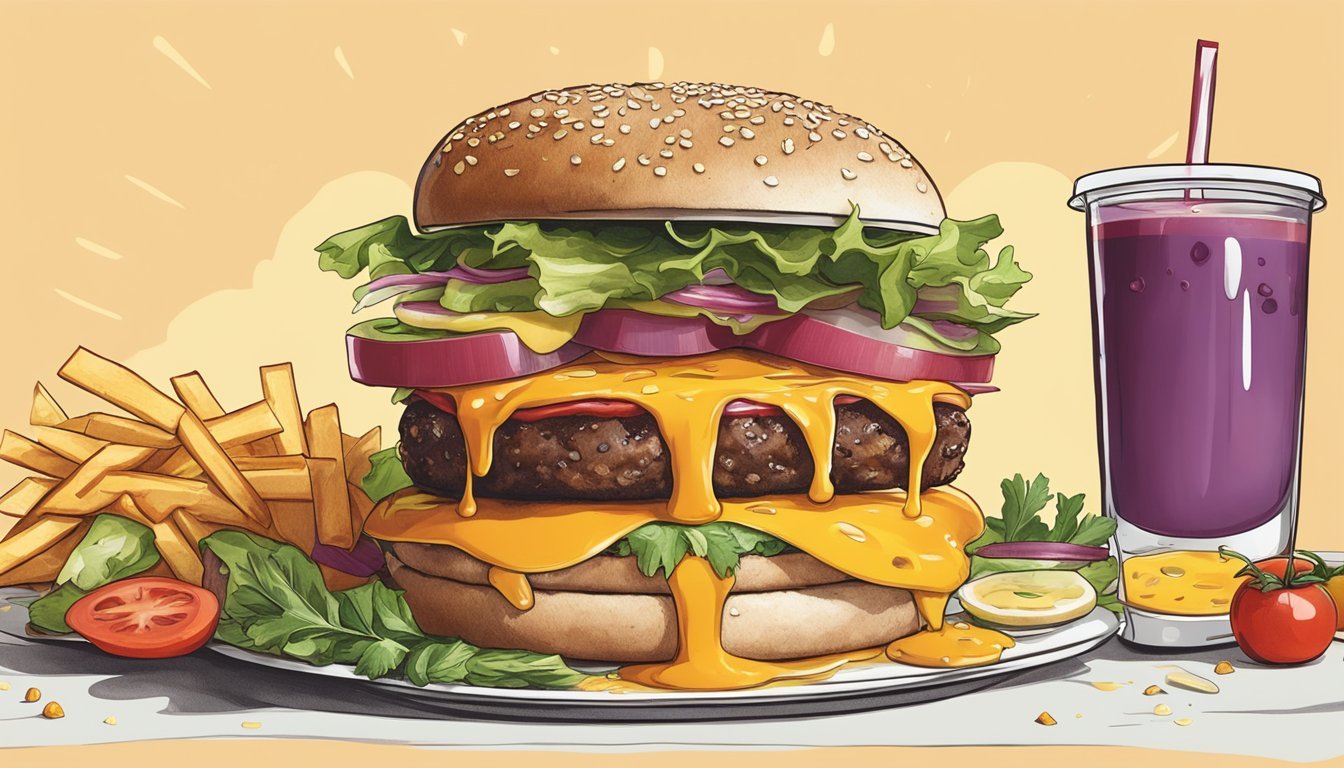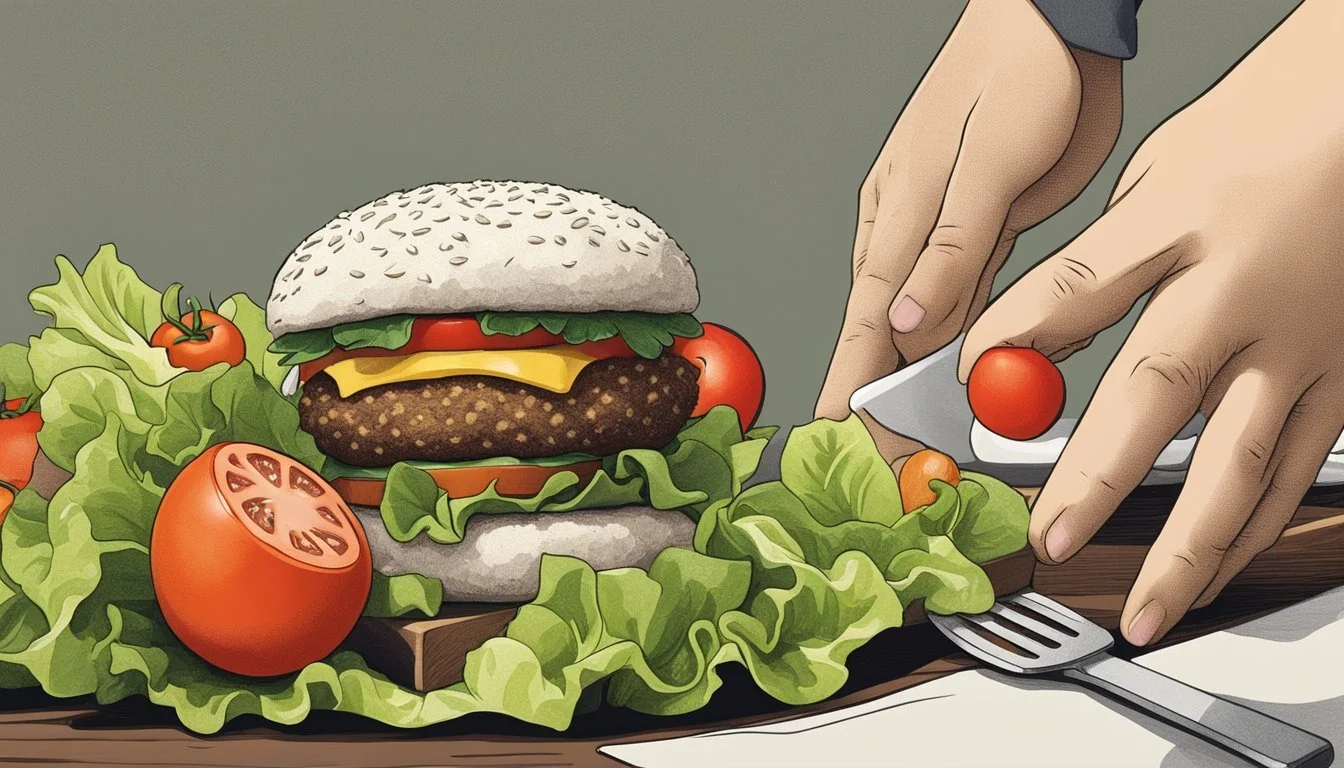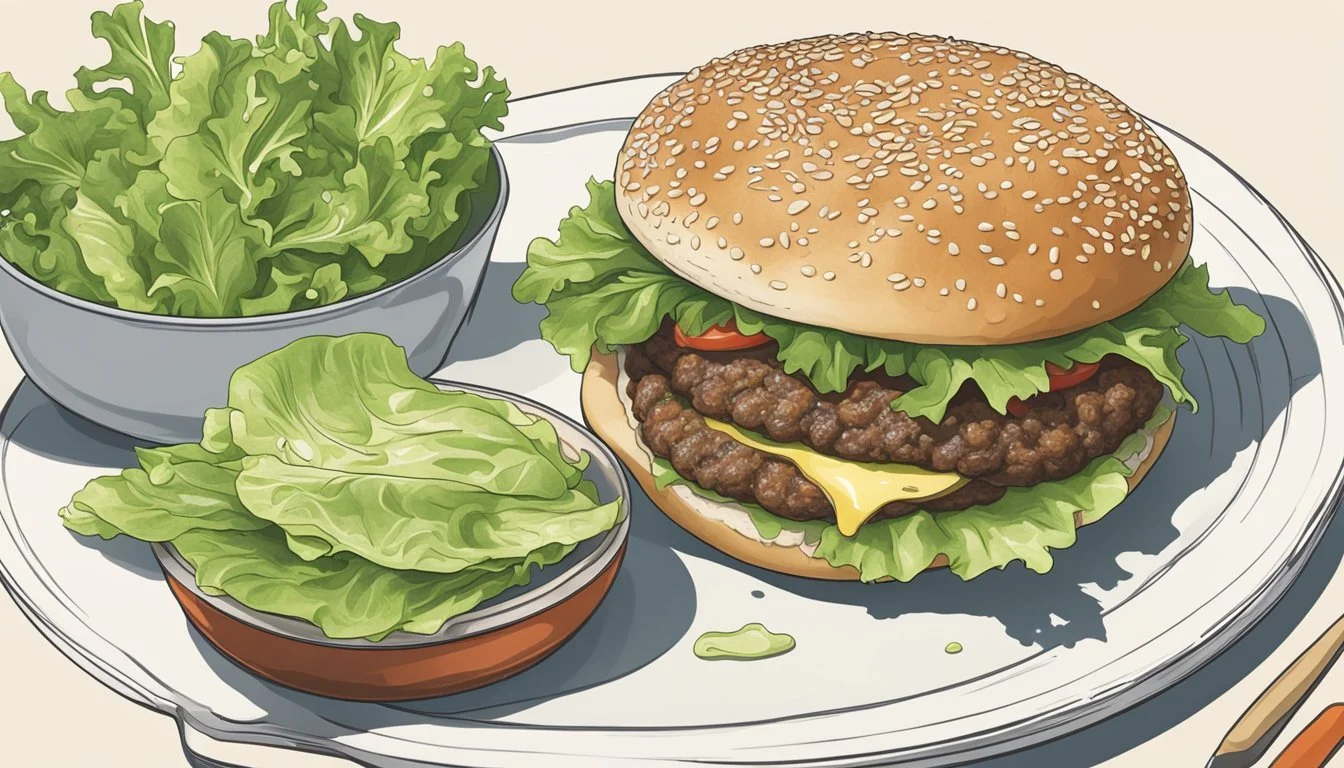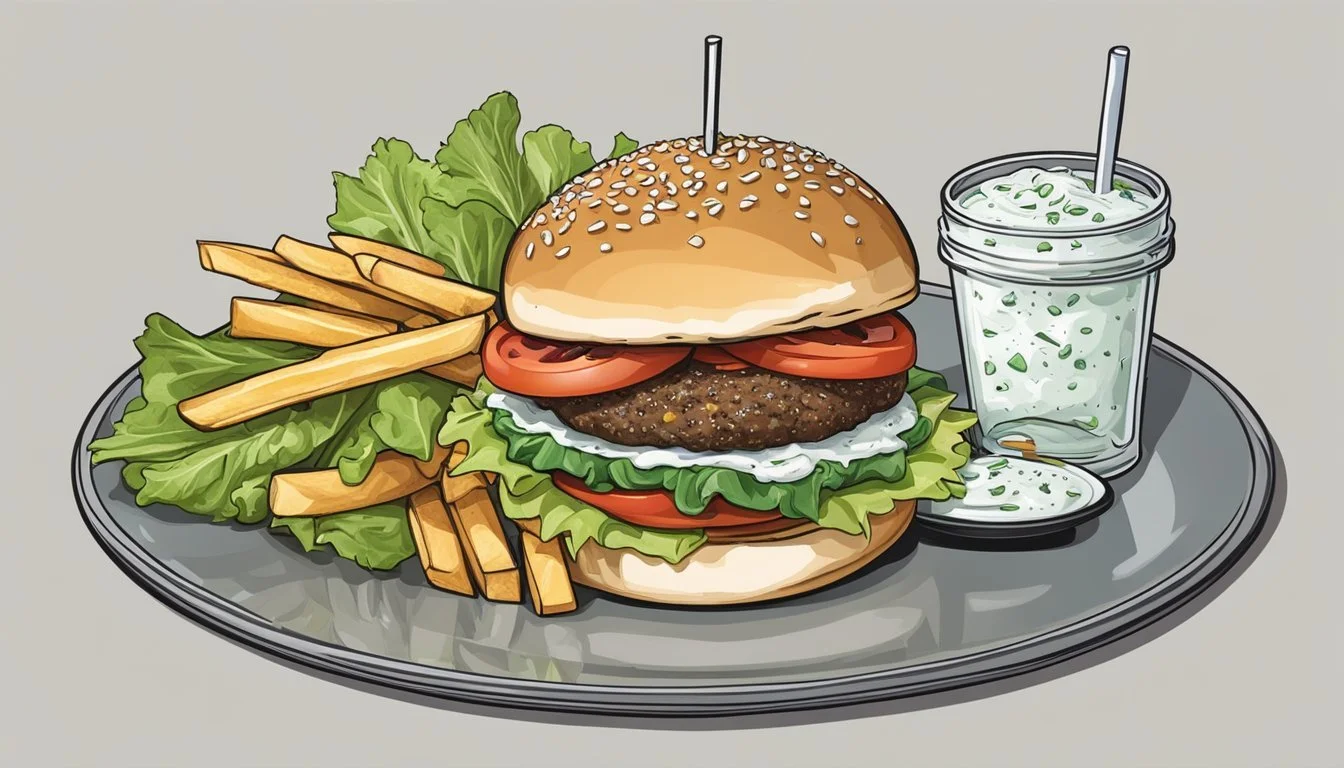How do you eat a lamb burger?
Expert Tips for the Ultimate Experience
Eating a lamb burger offers a delightful culinary experience that stands apart from the traditional beef burger. As with any burger, the first step is ensuring you have a quality patty, which, for lamb burgers, means selecting the right cut of lamb and grinding it or opting for pre-ground lamb that's fresh and well-sourced. The balancing act of flavors and textures in a lamb burger is crucial, as lamb's unique, robust taste pairs well with a variety of spices and condiments. A favored approach to seasoning involves incorporating aromatic herbs like mint or rosemary and spices such as cumin, coriander, and garlic into the meat before it is shaped and cooked to perfection.
The method of assembling a lamb burger is as essential as the cooking process itself. Traditionally, a lamb burger is nestled on a bun with a spread of sauce—often a cooling yogurt or feta-based sauce resonant with cucumber and mint to complement the lamb's pronounced flavor. Layering fresh elements like arugula (how long does arugula last?) and tomato adds not only a nutritional component but also texture and freshness that counterbalance the richness of the lamb. Optional toppings might include red onion for sharpness and a tangy kick, enhancing the overall gastronomic pleasure.
When approaching the actual consumption of a lamb burger, it is often best enjoyed freshly cooked with the meat still juicy and succulent. A firm but pliable bun is important, as it should hold up to the moisture and weight of the burger and condiments without falling apart. Each bite should be savored as it brings together the myriad of flavors and textures—from the spicy and aromatic lamb to the cooling sauce and crisp vegetables. A proper lamb burger experience is not just about satisfying hunger, but about appreciating the convergence of carefully chosen ingredients.
Selecting Quality Ingredients
When it comes to crafting a delicious lamb burger, the choice of ingredients is paramount. The richness of the lamb paired with the right herbs, seasonings, and fresh produce brings out a symphony of flavors, making each bite a gourmet experience.
Choosing the Right Lamb
To ensure the best flavor for the burgers, opt for freshly ground lamb that is well-marbled, which contributes to a juicier, more flavorful burger. If a mix of meats is preferred, ground beef can be added to the lamb in equal proportions to enhance the burger's texture and taste. For those willing to go the extra mile, minced lamb, hand-chopped from the shoulder or leg, will elevate the burger's quality with its texture and fresh, robust flavor.
Burger Buns and Toppings
The bun is just as important as the meat. Hamburger buns should be soft yet sturdy enough to hold up to the juices and toppings. Toppings like crisp lettuce, ripe tomato, thinly sliced red onion, and cucumber add crunch and freshness, while kalamata olives and crumbled feta cheese inject a burst of Mediterranean flair.
Toppings Description Lettuce Adds crispness. Tomato Offers juiciness and slight acidity. Red Onion Provides a sharp, tangy crunch. Cucumber Brings a refreshing bite. Kalamata Olives Delivers a salty, briny depth. Feta Cheese Contributes a creamy, tangy contrast.
Seasonings and Herbs
Seasonings such as kosher salt, freshly ground black pepper, and cumin are essential for enhancing the natural flavors of the lamb. Herbs like oregano, rosemary, and dill (how long does dill last?) offer fragrance and complexity to the palate, while fresh mint or chopped mint can introduce a refreshing note to the savory profile of the meat.
Herbs to consider:
Oregano: Earthy and slightly bitter, complements lamb perfectly.
Rosemary: Its piney flavor pairs well with the robustness of the meat.
Dill: Offers a sweet and grassy tang.
Mint: Adds a refreshing coolness that contrasts the hearty flavors.
A pinch of coriander or cumin can be used to impart a warm, slightly sweet undertone, ensuring every bite of the lamb burger is layered with savory notes and Mediterranean essence.
Preparing the Lamb Patties
Lamb burgers offer a delightful alternative to the traditional beef burger, with a rich and savory taste that is elevated by the proper preparation of the patties. This involves careful mixing and seasoning to ensure a flavorful and juicy burger.
Mixing and Shaping the Patties
To create lamb burger patties, one should begin by placing ground lamb into a large bowl. It's essential to mix the ingredients gently to avoid overworking the meat, which can result in tough patties. Using clean hands, they should combine the lamb with any additional ingredients like finely chopped onion, fresh mint, a squeeze of lemon juice, salt, and black pepper. Once mixed, the meat should be divided and shaped into evenly sized patties that are roughly the same diameter as the buns they will be served on.
Seasoning the Meat Properly
Seasoning is crucial for crafting a succulent lamb patty. They should sprinkle the meat with an adequate amount of salt and black pepper to enhance its natural flavors. It's important not to skimp on the seasoning, but also to ensure not to overpower the inherent taste of the lamb. The incorporation of seasonings like mint can add a refreshing note, complementing the rich taste of the lamb burger patties.
Cooking Methods
Preparing a lamb burger can be divided into two popular methods: grilling, which adds a smoky flavor and char, and stove cooking, which allows for precise temperature control. Both methods aim to reach the desired internal temperature for a juicy burger.
Grilling the Lamb Burger
Lamb burgers can be cooked to perfection on a grill, whether it's fueled by gas or charcoal. To achieve a medium-rare doneness, heat the grill to a medium-high temperature before placing the patties on the grates. One should aim for an internal temperature of around 145°F, as verified by a meat thermometer. The burger should develop a satisfying char on the outside while maintaining a tender interior.
Heat: Medium-high
Tool: Grill (gas or charcoal)
Target Internal Temperature: 145°F for medium-rare
Indicators: A good char on the outside, internal temperature reached
Cooking on the Stove
For those preferring indoor cooking, a cast iron skillet on a stove provides an excellent method for preparing lamb burgers. Heat the skillet over medium-high heat, optionally coating with a small amount of olive oil or butter to prevent sticking. The burgers should cook approximately 3 to 4 minutes per side to achieve a medium-rare to medium doneness, checking with a thermometer for an internal temperature between 145°F and 160°F.
Heat: Medium-high
Tool: Cast iron skillet
Target Internal Temperature:
Medium-rare: 145°F
Medium: 160°F
Indicators: A browned exterior, internal temperature reached
Building the Burger
Crafting a well-composed lamb burger involves meticulous layering and balancing of flavors and textures. An ideal construction enhances the savoriness of the patty and ensures every bite is satisfying.
Toasting the Buns
Toasting the buns is a crucial step for adding texture and preventing sogginess. For a gourmet touch, one might opt for brioche buns which offer a rich, buttery base. They can be lightly toasted on a pan or grill until golden brown. This not only imparts a slight crunch but also helps to hold up to the juices of the lamb burger.
Preheat grill or pan to medium heat.
Place the buns, cut-side down, and toast until they're lightly crisp, typically for 1-2 minutes.
Layering Toppings and Condiments
The toppings and condiments contribute significantly to the overall flavor profile and texture. Start by spreading condiments such as tzatziki or mayonnaise, followed by a layer of crumbled feta cheese for a creamy tang. Fresh lettuce, tomato, and red onions add a refreshing crunch. Each element complements the lamb's distinct taste.
Spread on the lower bun:
Tzatziki, mayonnaise, or Dijon mustard (to preference)
Layer the following, in order:
Lettuce
Sliced tomatoes
Sliced red onions
Assembling the Components
Finally, place the seasoned lamb burger on the lower bun bedecked with condiments and toppings. A well-assembled lamb burger holds all the components firmly, ensuring they contribute to each unified bite.
Carefully place the hot lamb patty atop the bed of lettuce, tomato, and red onions.
Optional: Add another dollop of tzatziki or a sprinkle of feta cheese on the patty.
Cap with the top bun, gently pressing down to secure the layers.
Sides and Accompaniments
Selecting the perfect sides and sauces can elevate a lamb burger from a mere meal to a culinary experience. They enhance the burger’s flavor profile and add varying textures to the dish.
Traditional Sides
Fries: A classic choice, fries offer a crispy exterior and fluffy interior that contrast well with a juicy burger.
Regular Fries: Thinly cut and deep-fried until golden.
Sweet Potato Fries: A sweeter alternative, these are often baked or fried to achieve a crisp finish.
Greek Salad: This refreshing option combines ripe tomatoes, crisp cucumbers (how long do cucumbers last?), red onion, creamy feta cheese, and Kalamata olives for a Mediterranean twist.
Salads: Various salads can accompany a lamb burger to add a fresh and light side.
Coleslaw: Shredded cabbage mixed with mayonnaise, vinegar, sugar, and seasoning for a creamy texture and tangy taste.
Sauce Options
Sauces can drastically change the flavor dynamics of a lamb burger.
Classic Condiments:
Mayonnaise: A creamy topping that adds moisture and richness.
Olive Tapenade: A briny and bold spread made from chopped olives, capers, (What wine goes well with capers?) and olive oil.
Specialty Sauces:
Tzatziki: A Greek yogurt-based sauce with cucumber and garlic that offers a cool and tangy complement.
Hummus: A creamy spread made from chickpeas, tahini, lemon, and garlic, providing a smooth and slightly nutty flavor.
Food Safety and Storage
Proper handling and storage are critical to ensure that a lamb burger is both delicious and safe to eat. Temperature control and proper cooking methods help in avoiding foodborne illnesses.
Ensuring Safe Consumption
To ensure that lamb burgers are safe to consume, one should always adhere to the recommended internal temperatures. A meat thermometer should be used to check that the lamb has reached a minimum internal temperature of 160 °F for ground meat, as advised by safety guidelines. It is important to use an instant-read thermometer for accurate results. A thermometer is not just a suggestion—it's a critical tool for health safety.
Refrigeration and Reheating
Leftover lamb burgers should be refrigerated within two hours of cooking and consumed within 3 to 4 days. When storing in the refrigerator, keep the temperature at 40 °F or below. To store for a longer period, one should freeze the patties at 0 °F. When it's time to enjoy the leftovers, they should be reheated to 165 °F, ensuring they are hot and safe to eat. A meat thermometer can once again be used to verify the correct temperature of reheated meat.
Nutritional Information
A lamb burger can be a nutritious addition to a balanced diet, offering a range of macronutrients such as proteins and fats, as well as various vitamins and minerals. When considering nutritional aspects of consuming a lamb burger, it is important to take into account its caloric content, the amount and type of fat and cholesterol it contains, and the presence of other nutrients such as protein, iron, and vitamins.
Caloric Content
Calories: On average, 100 grams of a lamb burger contains approximately 228 calories. However, the caloric value can vary depending on the preparation method and portion size.
Fat and Cholesterol
Total Fat: A 100-gram serving of a lamb burger typically has around 14 grams of fat, which includes saturated and unsaturated fats.
Saturated Fat: Of the total fat content, about 6.4 grams are saturated fats.
Cholesterol: The cholesterol content is around 80 milligrams per 4 ounces of cooked ground lamb.
Protein and Other Nutrients
Protein: Lamb burgers are rich in protein, with a 4-ounce serving offering about 25 grams of this macronutrient.
Vitamins and Minerals:
Iron is present in significant amounts, although specific quantities may vary.
Lamb meat also offers various vitamins, including B vitamins, which are essential for various bodily functions.
It is advisable to consume lamb burgers as part of a varied diet to ensure balanced intake of calories, fats, cholesterol, protein, and other nutrients.
Tips and Tricks
Eating a lamb burger is a culinary delight, but making it perfect requires attention to detail. Here's how to keep your lamb burgers tender and flavorful.
Avoiding Common Mistakes
Overworking the Meat: Lamb burgers should be handled gently to keep them tender. Overworking the meat can make the patty tough. Simply mix the seasonings in, shape the patties, and avoid excessive pressing.
Uniform Patty Thickness: To ensure even cooking, form patties that are uniform in size with a slight indentation in the middle. This prevents the centers from puffing up and cooking unevenly.
Enhancing Flavor and Juiciness
Seasonings and Herbs: A combination of herbs and seasonings like cumin, paprika, and garlic can enhance the flavor profile of lamb. For a more vibrant taste, fresh herbs are preferred over dried ones.
Marinate the Meat: Though not always necessary, marinating the lamb can introduce additional flavors and help retain juiciness. A simple marinade of olive oil, lemon zest, and seasonings could make a notable difference.
By incorporating these tips, the lamb burger experience can be greatly improved, leading to a more satisfying meal.
Variations and Customizations
Lamb burgers offer a rich and robust flavor that is adaptable to a wide range of toppings and spreads, as well as various meat blends. For those looking to enjoy something unique or tailor their burger to their taste, there are numerous opportunities for customization.
Alternative Toppings and Spreads
Toppings
Arugula: Adds a peppery bite and crisp texture.
Dill: Infuses the burger with a light, herbaceous note.
Hummus: Provides a creamy texture and complements the lamb's flavor.
Olive Tapenade: Brings a salty and briny contrast to the savory meat.
Spreads
Mustard: Offers tanginess which can cut through the richness of the lamb.
Aioli Variations: Garlic or herb-infused aiolis can enhance the burger's overall taste profile.
Different Meat Blends
Pure Lamb
100% Ground Lamb: A classic choice that puts the distinctive taste of lamb front and center.
Lamb and Beef Mix
Ratio: Combining ground lamb and ground beef can balance flavors and alter the texture; a common mix is 50% lamb, 50% beef.
Purpose: The addition of beef to the lamb can make the burger less gamey and more familiar to those who are new to eating lamb.
These customizations allow for a personalized burger experience suited to individual tastes.









